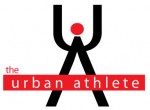Audience: Therapists, Strength Coaches and Patients
Purpose: Pointing out that not everyone has tight hip flexors and stretching the Psoas may be a very bad thing
Anterior hip pain is common and many of us feel a pinching, catching or inside thigh pain with squatting and other hip movements. Physiotherapists and chiropractors will see this everyday and it is often challenging to treat due to its multifactorial cause. This pain can manifest during walking, squatting (a pinching sensation felt during a squat) or during different exercises. There are certainly many causes and one possible cause of this anterior hip pain is stress applied to the anterior capsule of the hip joint. In severe cases this can lead to what is called a labral tear. Functionally, you can refer to the dysfunction as excessive anterior femoral glide.
Dr Cara Lewis under the supervision of Dr. Shirley Sahrmann conducted her PhD on anterior hip pain and kinesiology of the hip region. Cara created a biomechanical model of the hip joint (adapted from the Open model of simtk.org) and looked at the influence of hip position and muscle function during movements and exercises (Figure 1) over 4 different papers. She investigated possible sources/causes of anterior hip pain and future labral tears.
Findings
1. anterior hip force increases (the force that is most likely the cause of anterior hip pain) with 1. the leg in the greatest degree of extension 2. decreases in the amount of psoas/iliacus force production during a straight leg raise and 3. decreases in the amount of gluteus maximus force production
2. hip extension in and of itself (regardless of how optimal the force production is) increases anterior force on the hip joint. Optimal function was considered to be when the gluteus maximus provides maximal force for hip extension and the psoas/iliacus provides maximal force for hip flexion. Non-optimal function was modeled by reducing the force from these muscles and by having the other muscles essentially take up the slack. The model then found out what happened. Regardless of muscle function (optimal or non-optimal) hip extension was related to anterior hip force whereas hip flexion was not. But, optimal muscle force production (from the gluteus maximus or psoas/iliacus) is still better (i.e. less anterior hip force) than other muscles producing the movement.
Lessons from this Great PhD Thesis on how to minimize Anterior Hip Pain
*please note these recommendations are from Dr. Lewis and credit to her ideas must go to her and her colleagues
The reason I consider Dr. Lewis’ thesis very good is not only her research quality but how her different studies address all areas of the problem. Dr. Lewis explains the problem with anterior hip pain (e.g. a paper on Labral tears, which you can find here ), her next papers then explain how this pain pattern may occur and she then investigates and suggests a mechanism to influence that pain pattern. Below is what she found and a few select suggestions for minimizing anterior hip pain.
1. MINIMIZE HIP EXTENSION – sounds like a no brainer but how many therapists and strength coaches are stuck on the idea that the Psoas is tight and we need to stretch into hip extension.
2. identify and correct posterior pelvic tilt and standing knee extension (signs of hip extension)
3. during the prone hip extension test identify whether the motion is dominated by the hamstrings rather than the Gluteus Maximus. I had previously published a paper on this questioning whether the glutes actually fire earlier than the hamstrings (see here if you like). We showed that a delay in gluteal firing is actually what is normal rather than something that is abnormal. Dr. Lewis found this as well but with verbal cueing the hamstring activation onset can be delayed and the GMax facilitated
4. Perform a Gait assessment:
• Particularly noting a lack of appropriate knee flexion at heel-strike and early stance phase, prolonged foot flat during stance, and knee hyperextension that causes hip hyperextension
• Walking with the hip in lateral rotation as an improper correction of femoral anteversion
5. Modifying normal activities
• Avoid sitting with knees lower than hips, with legs crossed or sitting on legs so that the hip is rotated, on the edge of the seat and contracting the hip flexor muscles
• avoid sitting with pressure on the femur, which can cause forces into the hip joint; instead, the pressure should be on the ischial tuberosity; a pad may be placed under the ischial tuberosities to correct the problem of increased pressure on the femurs; patients who are overweight and who have large thighs should be encouraged to lose weight to avoid the altered alignment of the femur in sitting
• When getting up from a chair that is behind a desk or out of a car, patients should avoid pushing or rotating the pelvis on a loaded femur
• When walking on a treadmill, patients must be careful not to let the moving tread contribute to excessive hip hyperextension
• Patients should avoid weight training of quadriceps femoris and hamstring muscles and avoid any exercises causing hip hyperextension.
There are a number of other suggestions but this blog can not appropriately address them. I would refer the reader to Dr. Lewis and Dr Sahrmann’s paper on labral tears or Dr. Sahrmann’s textbooks and courses.
The references for all of Dr. Lewis’ research are below. The work is very clinically relevant
A note on my skepticism
Before you think that I have committed to drinking all of the kool aid associated with this research I will let you know that there are some limitations. However, any critique I have the authors also recognize and I can not provide any solid evidence to blast these ideas out of the water. Last, this blog post is long enough and I have an insane 3 year old beside me (an evaluation of her movement patterns will soon be posted). The model does not reflect the possibility that the psoas and iliacus tendon can provide a posteriorly directed force against the head of the femur to reduce the anteriorly directed force and stress on the anterior hip joint. Further, since I am now on a roll we STILL DO NOT KNOW IF THE BODY BEHAVES IN NON OPTIMAL WAYS in respect to the postulated abnormal hip function tested with this biomechanical model. Seriously, the idea that the psoas becomes tight/weak and therefore the glutes get inhibited has yet to be proven. I’m serious. While so many of us believe this concept and will swear that we see it in our patients, it has not been documented or consistently proven. Will someone please undertake a real MSc (not one through correspondence that Chiropractors keep getting) to investigate this.
Adios,
Greg
1. Lewis CL, Sahrmann SA, Moran DW. The effect of hip angle on anterior hip joint force during gait. Gait Posture. 2010 Oct;32(4):603-7. Epub 2010 Oct 8.
2. Lewis CL, Sahrmann SA. Muscle activation and movement patterns during prone hip extension exercise in women. J Athl Train. 2009 May-Jun;44(3):238-48. 3.
3. Lewis CL, Sahrmann SA, Moran DW. Effect of position and alteration in synergist muscle force contribution on hip forces when performing hip strengthening exercises. Clin Biomech (Bristol, Avon). 2009 Jan;24(1):35-42. Epub 2008 Nov 22.
4. Lewis CL, Sahrmann SA, Moran DW. Anterior hip joint force increases with hip extension, decreased gluteal force, or decreased iliopsoas force. J Biomech. 2007;40(16):3725-31. Epub 2007 Aug 17. 5.
5. Lewis CL, Sahrmann SA. Acetabular labral tears.Phys Ther. 2006 Jan;86(1):110-21. Review.




[...] that changing the activation patterns and amplitudes can influence anterior hip joint health. See my post here on the great research of Dr. Cara [...]
[...] that stretching or treating into hip extension may be detrimental to your patients or athletes. Please see my post on the dangers of hip extension. It is akin to cranking a shoulder into abduction and external rotation…what are you doing [...]
[...] FAI, labral tears and anterior femoral glide. I wrote about Cara’s research in this post here: I think her stuff is great but we still need more work done. (as [...]